Hinduism
Hinduism is an Indian religion and dharma, or way of life, widely practised in the Indian subcontinent and parts of Southeast Asia.

It also exists among significant populations outside of the sub continent and has over 1.1 billion adherents worldwide which makes around 15-16% of all the people living on Earth according to Pew Research Centre.
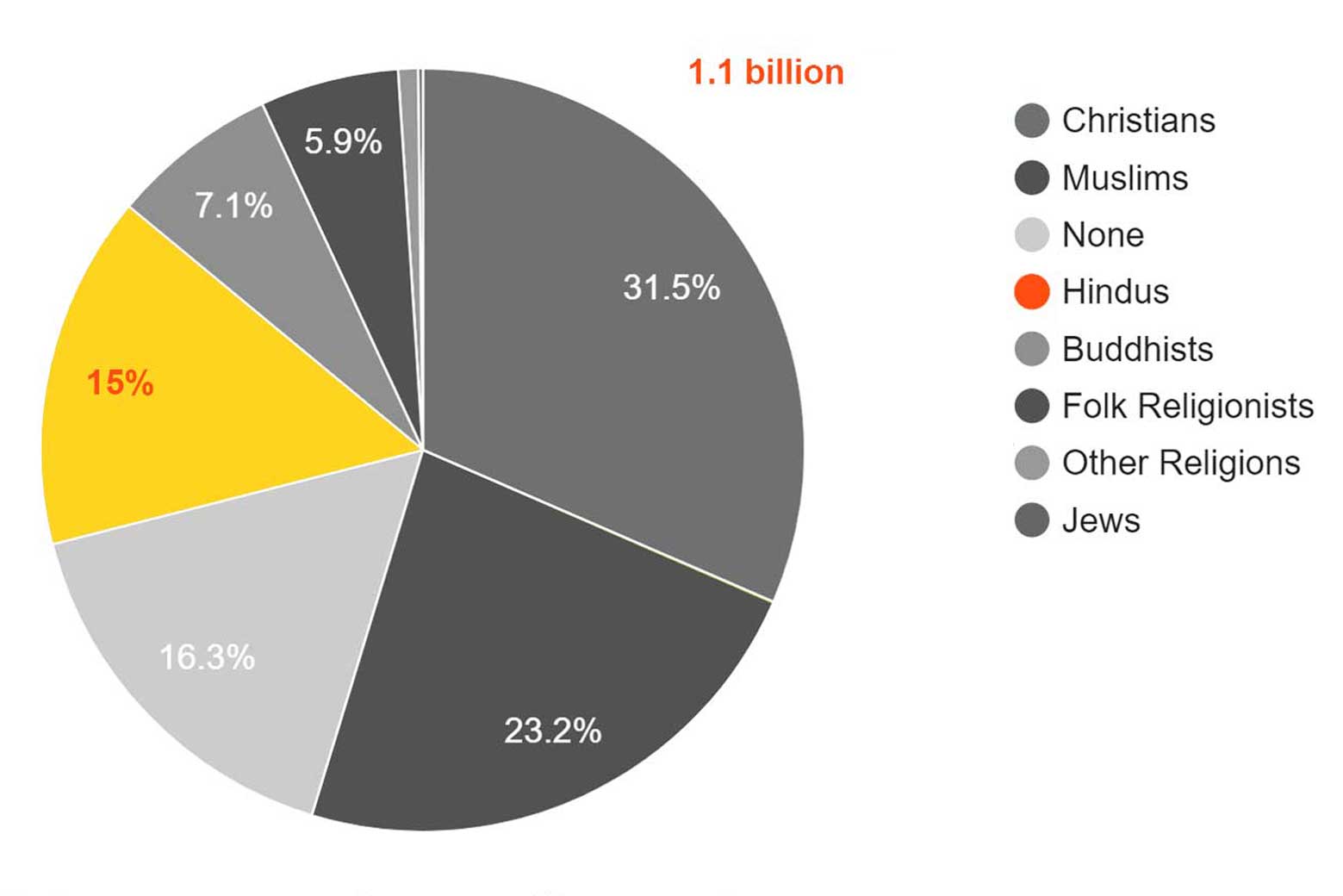
Symbol
Hinduism has few symbols but we’ll focus on the well known Om.
Om is the sacred sound symbol that represents Universe; Brahman, the ultimate reality. It is prefixed and sometimes suffixed to all Vedic mantras and prayers. Aum is often said to represent God in the three aspects of Brahman (A), Vishnu (U) and Shiva (M). As the Divine primordial vibration, it represents the one ultimate reality, underlying and encompassing all of nature and all of existence. The written syllable ॐ called omkara serves as a deeply significant and distinctly recognizable symbol for Hindu dharma.
The white dot represents the absolute state of consciousness which illuminates all other states of consciousness. The upper right semi circle (bowl like) represents maya or the veil of illusion. It seperates the absolute from the other three curves. The curve on the left top (top of number 3 like) represents deep sleep or the unconscious. The bottom (number 3 like) curve represents the waking state. The curve sprouting from (number 3 like spine) represents the dream state which lies between waking and deep sleep.

Brief History
Indus Valley Civilisation (before 2000 BCE)
The Indus Valley civilisation was located in the basin of the river Indus, which flows through present day Pakistan. It had developed by about 2500 BCE although its origins reach back to the Neolithic period. It had faded away by 1500 BCE.
The Indus Valley was a developed urban culture akin to the civilisations of Mesopotamia. Two major cities have been uncovered, Mohenjo-Daro and Harappa, which has given us the alternative name of Harappan culture.
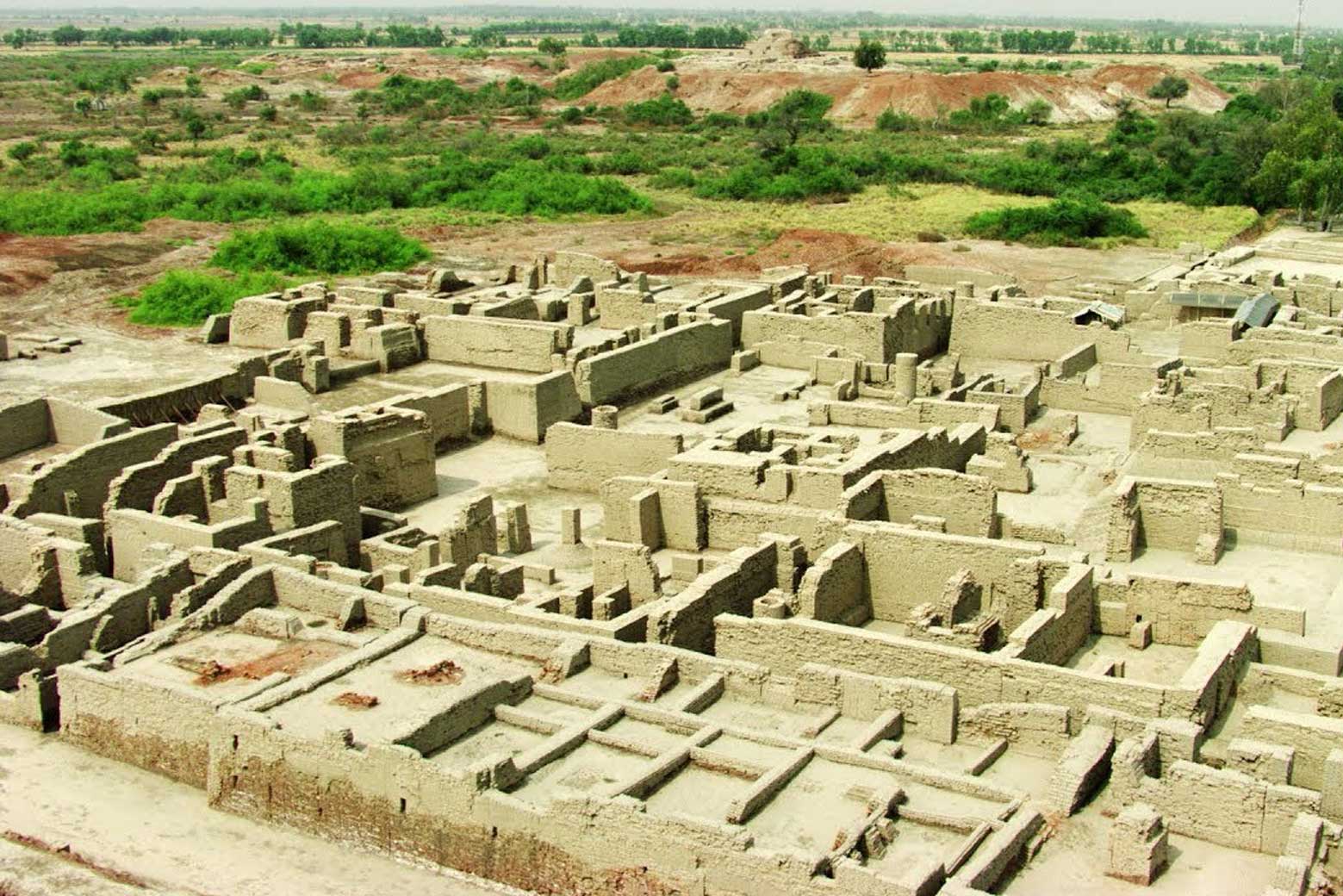
These cities housed about 40,000 people who enjoyed quite a high standard of living with sophisticated water systems; most houses having drainage systems, wells, and rubbish chutes. Grain was the basis of the economy and large grain stores collected grain as tax.
The civilisation was extensive, from the eastern foothills of the Himalayas, to Lothar on the Gujarat coast, and to Sutgagen Dor near the Iranian border. Some cities of the Indus valley culture have yet to be excavated.

The Vedic Period (c.1500–c.500 BCE)
If we take ‘Vedic Period’ to refer to the period when the Vedas Zwere composed, we can say that early vedic religion centred around the sacrifice and sharing the sacrificial meal with each other and with the many gods (devas). The term ‘sacrifice’ (homa, yajna) is not confined to offering animals but refers more widely to any offering into the sacred fire (such as milk and clarified butter).
Some of the vedic rituals were very elaborate and continue to the present day. Sacrifice was offered to different vedic gods (devas) who lived in different realms of a hierarchical universe divided into three broad realms: earth, atmosphere and sky.

The Epic, Puranic and Classical Age (c.500 BCE–500 CE)
This period, beginning from around the time of Buddha (died c. 400 BCE), saw the composition of further texts, the Dharma Sutras and Shastras, the two Epics, the Mahabharata and the Ramayana, and subsequently the Puranas, containing many of the stories still popular today. The famous Bhagavad Gita is part of the Mahabharata.
The idea of dharma (law, duty, truth) which is central to Hinduism was expressed in a genre of texts known as Dharma Sutras and Shastras. The Dharma Sutras recognise three sources of dharma: revelation (i.e. the Veda), tradition (smrti), and good custom. The Laws of Manu adds ‘what is pleasing to oneself’.
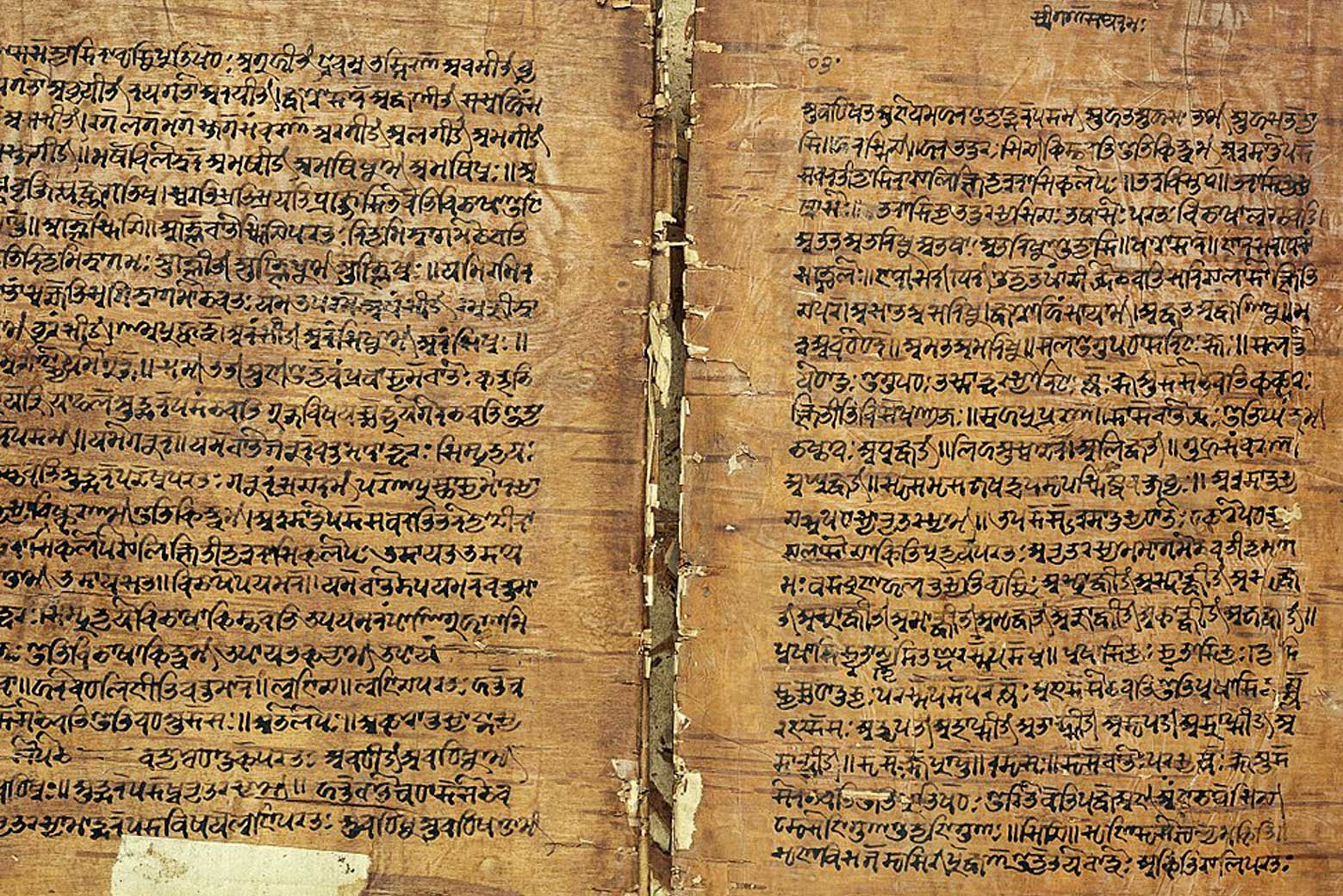
Medieval Period (500 CE–1500 CE)
This period saw the development of the great regional temples such as Jagganatha in Puri in Orissa, the Shiva temple in Cidambaram in Tamilnadu, and the Shiva temple in Tanjavur, also in Tamilnadu. All of these temples had a major deity installed there and were centres of religious and political power.
During this time not only religious literature in Sanskrit developed but also in vernacular languages, particularly Tamil. Here poet-saints recorded their devotional sentiments. Most notable are the twelve Vaishnava Alvars (6th–9th centuries), including one famous female poet-saint called Andal, and the sixty-three Shaiva Nayanars (8th–10th centuries).

The Pre-Modern Period (c.1500–1757 CE)
Alongside the development of Hindu traditions, most widespread in the South, was the rise of Islam in the North as a religious and political force in India. The new religion of Islam reached Indian shores around the 8th century, via traders plying the Arabian Sea and the Muslim armies which conquered the northwest provinces.
Muslim political power began with the Turkish Sultanate around 1200 CE and culminated in the Mughul Empire (from 1526). Akbar (1542–1605) was a liberal emperor and allowed Hindus to practice freely. However, his great grandson, Aurangzeb (1618–1707), destroyed many temples and restricted Hindu practice.

British Period (1757–1947 CE)
Robert Clive’s victory at the Battle of Plassey (1757) heralded the end of the Mughul Empire and the rise of British supremacy in India.
At first, the British did not interfere with the religion and culture of the Indian people, allowing Hindus to practice their religion unimpeded. Later, however, missionaries arrived preaching Christianity. Shortly after, the first scholars stepped ashore, and though initially sympathetic, were often motivated by a desire to westernise the local population. Chairs of Indology were established in Oxford and other universities in Europe.

Identity in the Hindu diaspora
However, the post-war Hindu movements imported into the west, and wide migration of Hindus, raised questions about the exact nature of Hindu identity. From the 1960s onwards, many Indians migrated to Britain and Northern America. Gurus travelled to the West to nurture the fledgling Hindu communities, sometimes starting missionary movements that attracted Western interest.
In the late 1960s, Transcendental Meditation achieved worldwide popularity, attracting the attention of celebrities such as the Beatles. Perhaps the most conspicuous was the Hare Krishna movement, whose male followers sported shaved heads and saffron robe
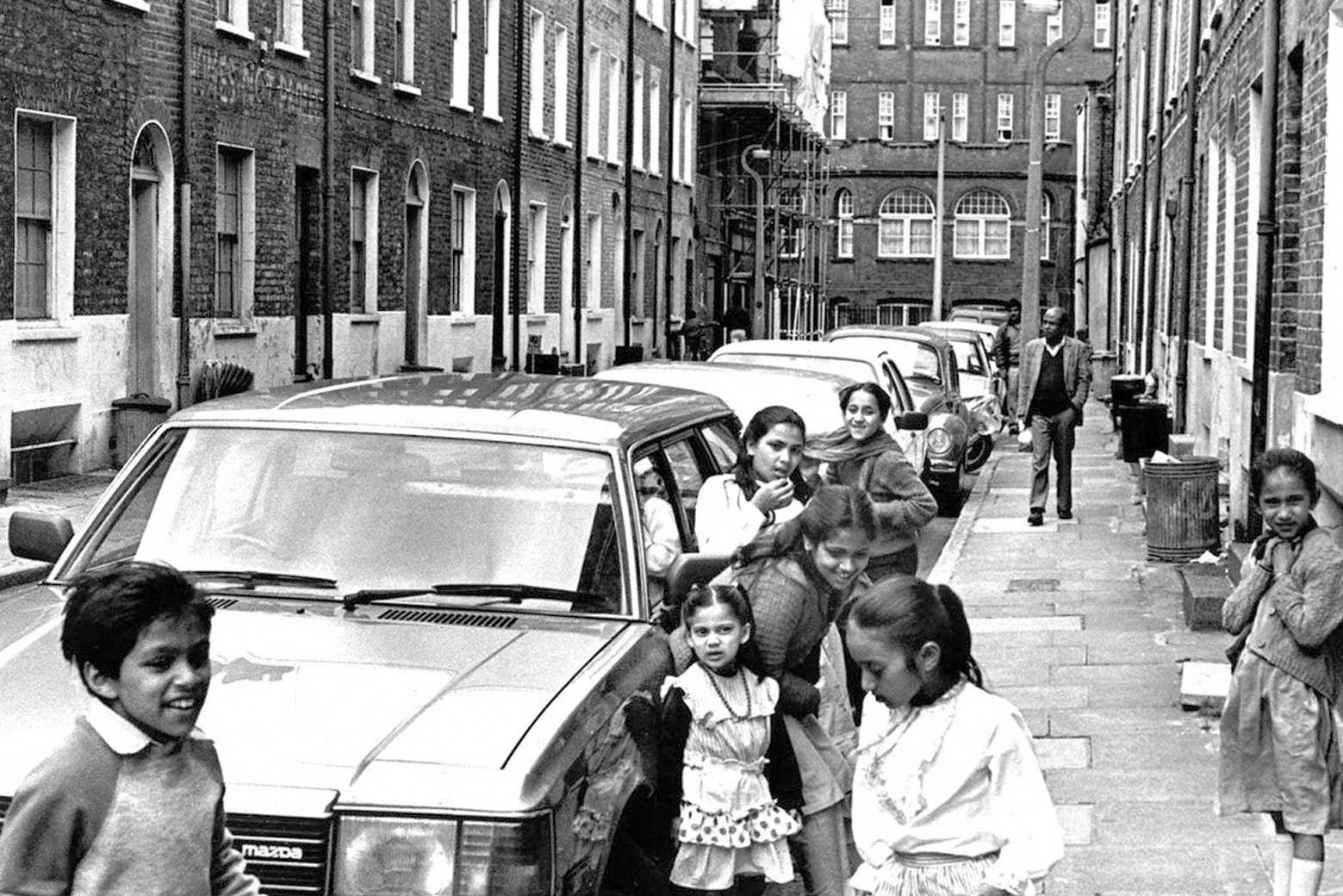
The Vedas
These are the most ancient religious texts which define truth for Hindus.
They got their present form between 1200-200 BCE and were introduced to India by the Aryans.
Hindus believe that the texts were received by scholars direct from God and passed on to the next generations by word of mouth.
Vedic texts are sometimes called shruti, which means hearing. For hundreds, maybe even thousands of years, the texts were passed on orally.
Contents of the Vedas
The Vedas are made up of four compositions, and each veda in turn has four parts which are arranged chronologically.
- The Samhitas are the most ancient part of the Vedas, consisting of hymns of praise to God.
- The Brahmanas are rituals and prayers to guide the priests in their duties.
- The Aranyakas concern worship and meditation.
- The Upanishads contain some of the central philosophical concepts and ideas of Hinduism, some of which are shared with religious traditions like Buddhism and Jainism.
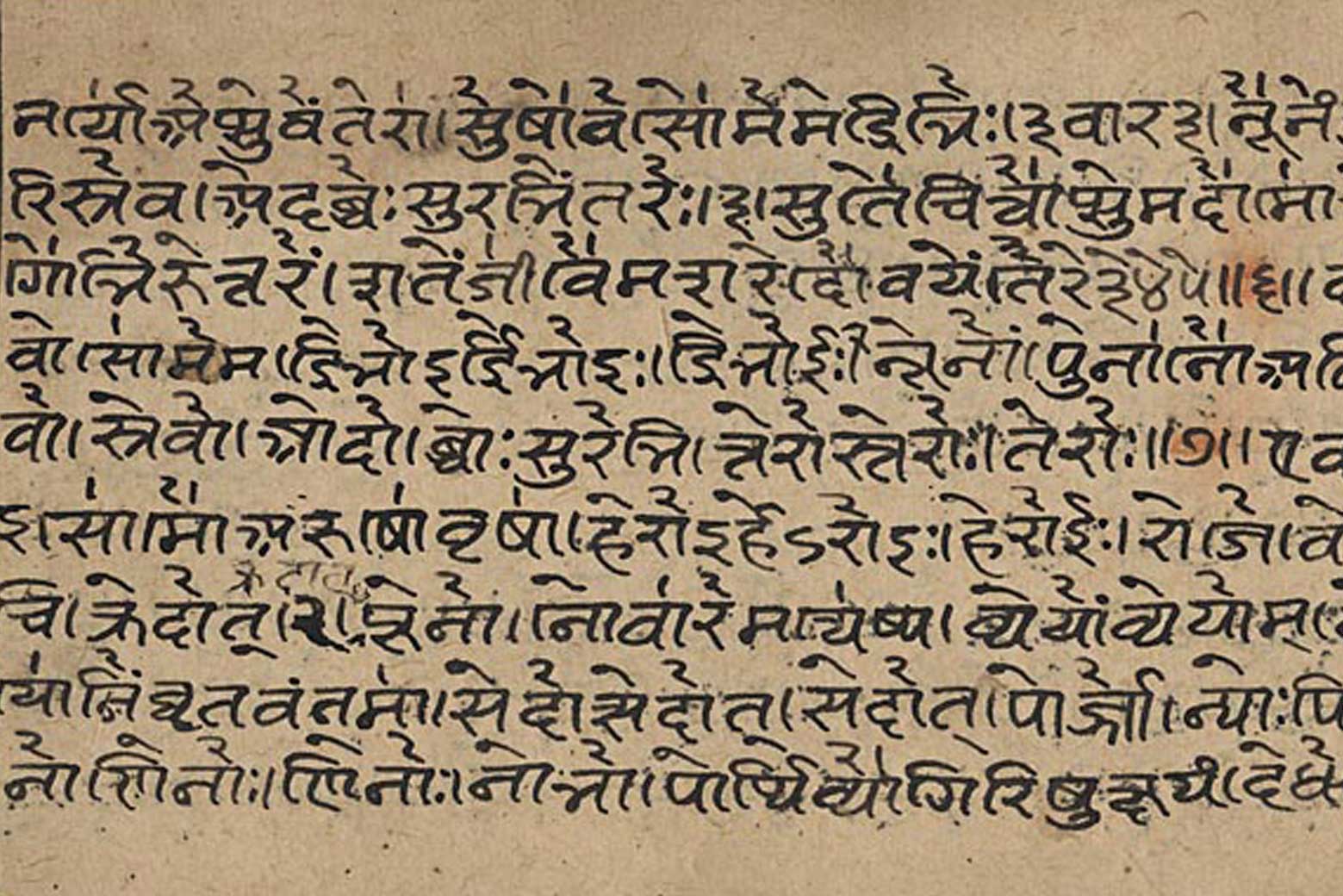
Hindu worship, or puja
involves images (murtis), prayers (mantras) and diagrams of the universe (yantras).
Central to Hindu worship is the image, or icon, which can be worshipped either at home or in the temple.
Hindu worship is primarily an individual act rather than a communal one, as it involves making personal offerings to the deity.
Worshippers repeat the names of their favourite gods and goddesses, and repeat mantras. Water, fruit, flowers and incense are offered to god.
The majority of Hindu homes have a shrine where offerings are made and prayers are said.
A shrine can be anything: a room, a small altar or simply pictures or statues of the deity.
Family members often worship together. Rituals should strictly speaking be performed three times a day. Some Hindus, but not all, worship wearing the sacred thread (over the left shoulder and hanging to the right hip). This is cotton for the Brahmin (priest), hemp for the Kshatriya (ruler) and wool for the vaishya (merchants).

Pilgrimage
is an important aspect of Hinduism. It’s an undertaking to see and be seen by the deity.
Popular pilgrimage places are rivers, but temples, mountains, and other sacred sites in India are also destinations for pilgrimages, as sites where the gods may have appeared or become manifest in the world.
Kumbh Mela on the picture. Once every 12 years, up to 10 million people share in ritual bathing at the Kumbh Mela festival at Allahabad where the waters of the Ganges and Jumna combine.
Hindus from all walks of life gather there for ritual bathing, believing that their sins will be washed away.
The bathing is followed by spiritual purification and a ceremony which secures the blessings of the deity.
The river Ganges is the holiest river for Hindus.

Rituals
Mariage
Hindu sacraments are called ‘sanskars’ and the sacraments performed at the time of a wedding are called ‘Vivah Sanskar’.
This sanskar marks the start of the second and the most important stage of life called the ‘Grihistha Ashrama’ which involves setting up of a new family unit.
Two individuals who are considered to be compatible form a lifelong partnership at this ceremony in which the responsibilities and duties of a householder are explained.
The precise details and rituals performed in a wedding ceremony vary from region to region and often take several hours to complete.
The main stages of a Hindu wedding are:
- Jayamaala Firstly, the bride’s parents welcome the bridegroom and his family at the boundary of the house where the wedding is taking place. A red kum-kum (kind of powder) mark is applied to their forehead. Members from both families are formally introduced, marking the start of relationship between two families. The bride and the bridegroom then exchange garlands (jayamaala) and declare: “Let all the learned persons present here know, we are accepting each other willingly, voluntarily and pleasantly. Our hearts are concordant and united like waters.”
- Madhu-Parka The bridegroom is brought to a specially decorated altar called ‘mandap’ and offered a seat and a welcoming drink – a mixture of milk, ghee, yoghurt, honey and sugar.
- Gau Daan and Kanya Pratigrahan ‘Gau’ means cow and ‘Daan’ means donation. Nowadays, the symbolic exchange of gifts, particularly clothes and ornaments takes place. The groom’s mother gives an auspicious necklace (mangala sootra) to the bride. Mangla sootra is the emblem of marital status for a Hindu woman. ‘Kanya’ means the daughter and ‘Pratigrahan’ is an exchange with responsiveness on both sides. The bride’s father declares that their daughter has accepted the bridegroom and requests them to accept her.

Baby rites
Hindu rituals sanskaras begin before a child is born.
Hindus believe that it is the responsibility of each individual to continue the Hindu race and therefore soon after a couple are married, a prayer called Garbhadana (conception) is recited for fulfillment of one’s parental obligations.
During the third month of pregnancy the ceremony of Punsavana (foetus protection) is performed. This is done for the strong physical growth of the foetus.
The Simantonnyana is performed during the seventh month. This is the equivalent of a baby shower and means ‘satisfying the craving of the pregnant mother’. Prayers are offered for the mother and child with emphasis on healthy mental development of the unborn child. Hindus believe that mental state of a pregnant woman affects the unborn child.
Once the child enters the world, Jatakarma is performed to welcome the child into the family, by putting some honey in the child’s mouth and whispering the name of God in the child’s ear.
Other rituals include a naming ceremony Namakarna, the Nishkarmana (the child’s first trip out) and the Annaprasana, (the child’s first taste of solid food).
The ear-piercing ceremony Karnavedha and first haircut Mundan ceremonies are also considered highly significant. These sacraments are performed on both the sexes. Hindus believe that the piercing of a hole in the lower lobes of the ear have benefits of acupuncture.
Head shaving is connected to the removal of impurities.

Holly days
Diwali
Diwali, the Hindu festival of lights, is the most popular of all the festivals from South Asia. It is also an occasion for celebration by Jains and Sikhs.
The festival of Diwali extends over five days. Because of the lights, fireworks and sweets involved, it’s a great favourite with children.
The festival celebrates the victory of good over evil, light over darkness and knowledge over ignorance, although the actual legends that go with the festival are different in different parts of India.
The Times of India summed up the modern meaning of Diwali:
Regardless of the mythological explanation one prefers, what the festival of lights really stands for today is a reaffirmation of hope, a renewed commitment to friendship and goodwill, and a religiously sanctioned celebration of the simple – and some not so simple – joys of life.
The name of the festival comes from the Sanskrit word dipavali, meaning row of lights.

The lamps are lit to help the goddess Lakshmi find her way into people’s homes. They also celebrate one of the Diwali legends, which tells of the return of Rama and Sita to Rama’s kingdom after fourteen years of exile.

is one of the most important festivals of the Hindu calendar and celebrates the sun’s journey into the northern hemisphere, a period which is considered to be highly auspicious.
There is a wide variation in the celebration of Makar Sankranti throughout India, in particular the name.

Holi festival
Holi was originally a spring festival of fertility and harvest. Now it also marks some Hindu legends, which provide some of the ingredients for the celebrations.
Now I am going to read about the Legend of Prahalad and Holika a little bit.
Holika was a female demon, and the sister of Hiranyakashyap, the demon king. Hiranyakashyap considered himself ruler of the Universe, and higher than all the gods.
Prahalad was the king’s son. His father hated him because Prahalad was a faithful devotee of the god Vishnu.One day the king asked him “Who is the greatest, God or I?” “God is,” said the son, “you are only a king.” The king was furious and decided to murder his son. But the king’s attempts at murder didn’t work too well. Prahalad survived being thrown over a cliff, being trampled by elephants, bitten by snakes, and attacked by soldiers. So the king asked his sister, Holika, to kill the boy. Holika seized Prahalad and sat in the middle of a fire with the boy on her lap. Holika had been given a magic power by the gods that made her immune to fire, so she thought this was a pretty good plan, and Prahalad would burn to death while she remained cool. But it’s never wise to take gods’ gifts for granted! Because Holika was using her gift to do something evil, her power vanished and she was burned to ashes. Prahalad stayed true to his God, Vishnu, and sat praying in the lap of his demon aunt. Vishnu protected him, and Prahalad survived. Shortly afterwards, Vishnu killed King Hiranyakashyap and Prahad ruled as a wise king in his father’s place.
The moral of the story is that good always wins over evil, and those who seek to torment the faithful will be destroyed.
To celebrate the story, large bonfires are burned during Holi. In many parts of India, a dummy of Holika is burned on the fire.

Main believes
- Most Hindus believe in a Supreme God, whose qualities and forms are represented by the multitude of deities which emanate from him.
- Hindus believe that existence is a cycle of birth, death, and rebirth, governed by Karma.
- Hindus believe that the soul passes through a cycle of successive lives and its next incarnation is always dependent on how the previous life was lived
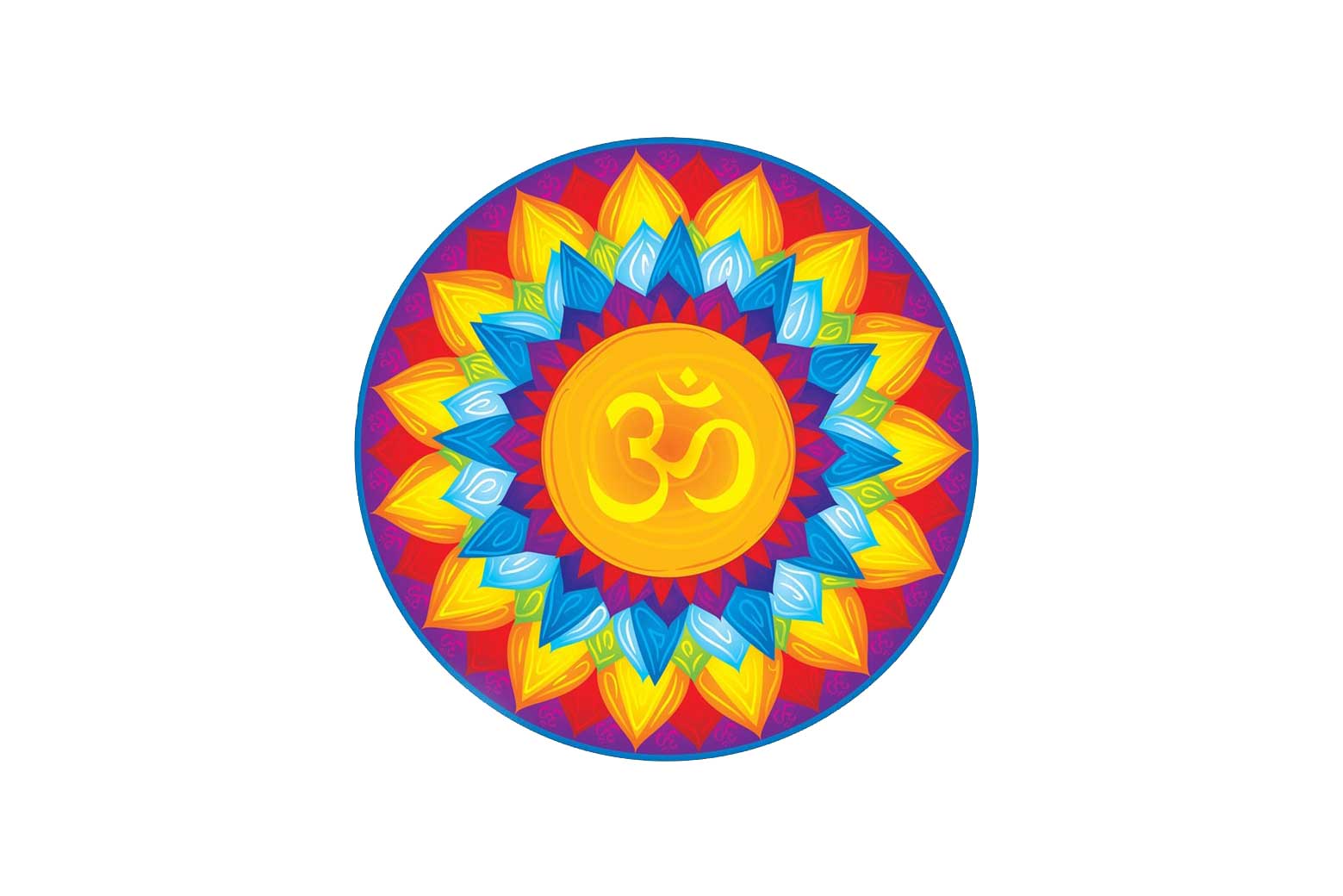
The mainstream Hindu philosophies

few photos from our film screening & discussion on Hinduism
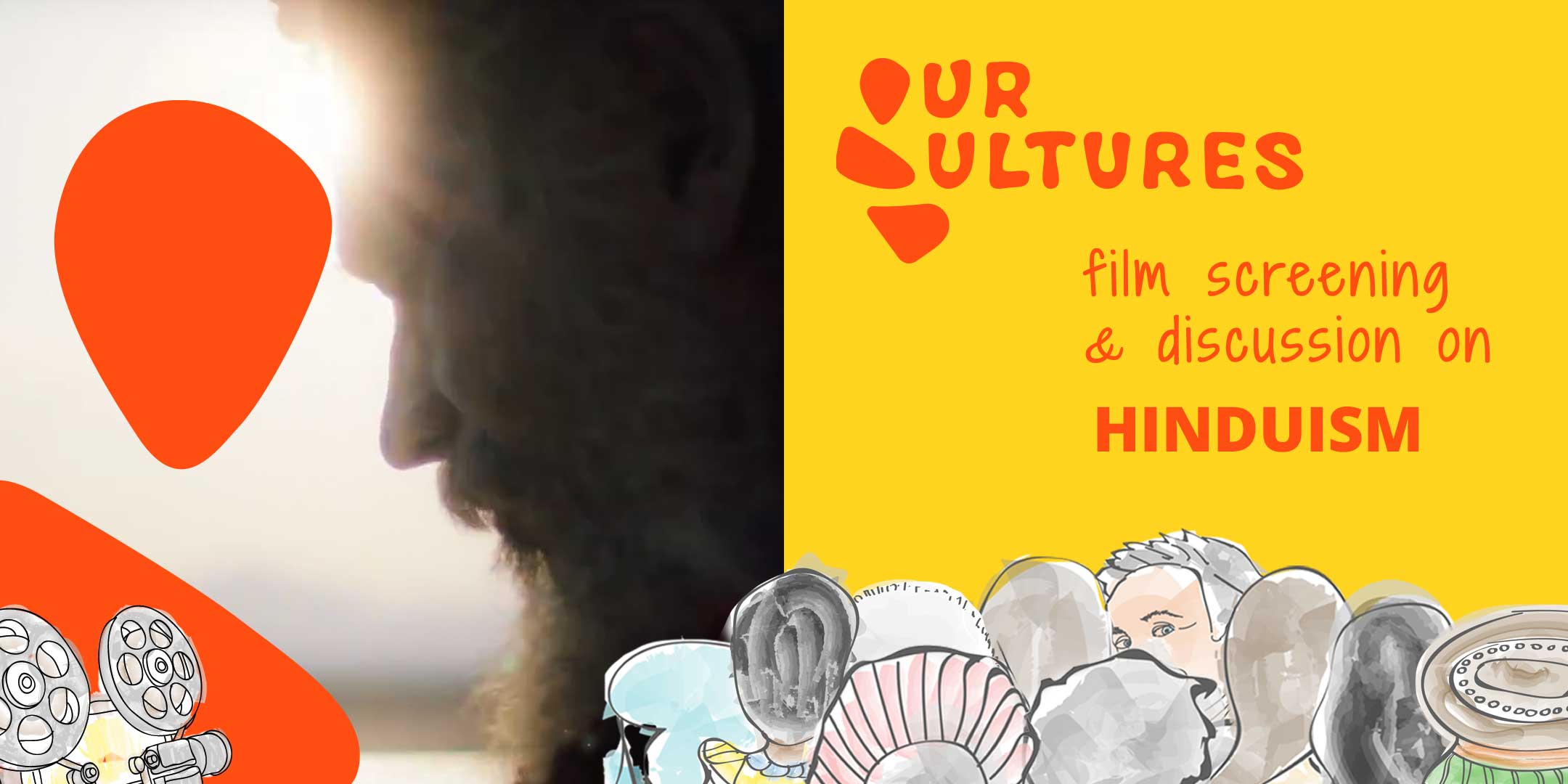
description of the past event
Hi,
Join us and the Our Cultures for a film screening & discussion on HINDUISM with possible guests from the Sheffield Hindu and Yoga community.
History of Hinduism denotes a wide variety of related religious traditions native to the Indian subcontinent. Its history overlaps or coincides with the development of religion in Indian subcontinent since the Iron Age, with some of its traditions tracing back to prehistoric religions such as those of the Bronze Age Indus Valley Civilization. It has thus been called the “oldest religion” in the world.
We are going to have a presentation about Hinduism and a screening of a documentary about one from the six philosophies of the religion which has been bringing peace of mind and strength to millions of people, Yoga.
After the screening a discussion is going to be held hopefully also with the Sheffield Hindu and Yoga community.
Feel free to call your family, friends and colleagues. Even bring a snack with you if you like. We’ll brew a cup of a hot drink for you anyway.
______________________________________
8th January (Tue) 18:20
The Welcome Centre
______________________________________
entrance on Nottingham St opposite Pilgrim St
S3 9AW
The Our Cultures is screening films and documentaries on the first Tuesday of every month except summer and winter holidays. It’s always good to check updates on our Facebook page or by subscribing to our newsletter.
To find out more also experience a cosy evening with us and a cuppa, join us for the screening at the Welcome Centre.
The event is entirely FREE of charge.
There is no money involved (directly) at all. No grants, no funds only people’s will to do so.
MANY THANKS FOR YOUR SUPPORT AND SPREADING THE WORD.
See you there,
(entrance on Nottingham St opposite Pilgrim St S3 9AW)
Jozef
Our Cultures





References
BBC
Wikipedia
graphics socha design
photographs/images free sources
